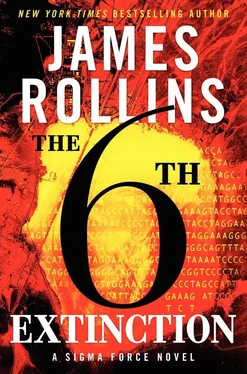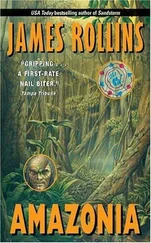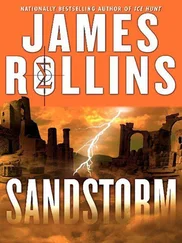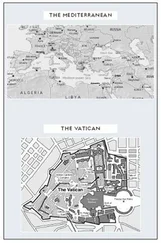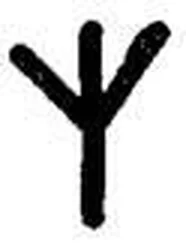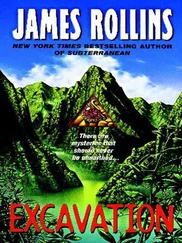From that, he guessed he was in Brazil, likely one of its northern states. But they hadn’t stayed long enough for him to determine anything else. At dawn the next day, they transferred him to this small helicopter, which looked weathered and barely airworthy.
Still, it had gotten them this far.
Another burst of chain lightning crackled across the clouds. A dark silhouette appeared near the horizon, rising starkly from the forest, like a black battleship riding a green sea. Kendall shifted higher, trying to get a better view — especially as Mateo stirred, gathering a pack from the floor.
Was that their destination?
As the helicopter droned onward, the rain slowed but the rumbling thunder continued, accompanied by occasional bolts of brilliance, each one revealing more details of the mountain ahead.
And it was a mountain —rising from the forest floor in sheer cliffs, thousands of feet tall. Its flat summit, shrouded in heavy mists, pushed above the lowermost clouds.
Kendall recognized this unusual geological formation. It was unique to this region of South America. Towering blocks of ancient sandstone like this — called tepui — lay scattered across the rain forests and swamps of northern Brazil, extending into Venezuela and Guyana. They numbered over a hundred. The most famous was Mount Roraima, rising almost two miles above the forest floor, with its summit — a flat plateau — spread over ten square miles.
The tepui ahead was much smaller, maybe a quarter of that size.
But long ago, these hundreds of mesas had once been connected together into a single giant sandstone massif. As the continents broke apart and shifted, that ancient massif fragmented into pieces, where rain and wind eroded the broken blocks into this collection of scattered plateaus, lonely sentinels of another time.
Though Kendall had never visited any of these tepuis, he knew about them from his research into unusual forms of life. The tepuis were some of earth’s oldest formations, going back to Precambrian times, older than most fossils. These islands in the sky, isolated for ages, were home to species found only atop their summits, animals and plants unique unto themselves. Due to the remoteness of the region and the sheer cliffs, many of the plateaus had never been walked by man. They represented some of the least-explored areas on the planet, remaining unpolluted and pure.
The helicopter climbed higher, buffeted by stronger winds, and swept toward the mountain — which from a bird’s-eye view looked dark and forbidding, untouched by man.
As they crested the plateau, the surface of the tepui wasn’t as flat as it appeared from a distance. A large central pond dominated the summit, reflecting their navigation lights. Along its southern bank, storm-flooded waters spilled down to a lower section of the plateau, a shelf covered by a dense, stunted forest, a mockery of the rich life far below. North of the pond spread a labyrinth of rock, sculpted by wind and rain into chasms, caves, and a forest of unearthly pillars, all of it covered by a spongy dark-green moss or a gelatinous-looking algae. But between the cracks, he spotted flourishes of orchids and flowering bromeliads, a magical garden bathed by the mists.
The helicopter lowered for a landing on a flat section of stone near the pond, its lights sweeping the plateau. Only then did Kendall see signs of human occupation. Built within one of the larger caves — filling it completely like an overflowing cornucopia — was a magnificent stone home with balconies, gables, even a hothouse conservatory. The home’s surfaces were all painted shades of dark green to match its surroundings.
He also noted a neighboring corral, which held a couple of Arabian horses, alongside a parked row of golf carts, which looked distinctly out of place, though the vehicles were also painted green. Beyond the house, a handful of tall wind turbines blended perfectly with the stone pillars.
Someone plainly wants to keep a low profile .
That someone stood nearby, under an umbrella.
Once the skids touched down, Kendall’s guard opened the cabin door and hopped out. He kept his tall height bowed from the blades overhead. A handful of men stood nearby with camouflage netting in hand, ready to hide the aircraft after it shut down. The group shared the same dark complexion and round faces as the guard and pilot. Likely they were all from the same native tribe.
Knowing he had no choice, Kendall climbed out into the misty drizzle. He shivered at the clammy coldness at this elevation, a distinct difference from the swelter of rain forest below. He stepped toward the man who the world believed had died eleven years ago.
“Cutter Elwes. For a dead man, you are looking well.”
In fact, Cutter appeared better than the last time the two had spoken. It had been ages ago, at a synthetic biology conference in Nice. Then Cutter had been red-faced, full of youthful fury at the poor reception his paper had received from Kendall’s colleagues.
But what had he expected?
Now the man appeared fit, relaxed, a calm purposefulness to his blue-steel gaze under dark black hair. He was dressed in crisp linen pants and a white shirt, with a beige safari vest on top.
“And you, my dear friend, look tired… and wet.” Cutter held out his own umbrella.
Angry, Kendall ignored the offering.
Cutter voiced no offense and returned the umbrella to above his own head. He turned, clearly expecting Kendall to follow, which he did.
Where else am I going to go?
“I imagine you’ve had a hard trip getting here,” Cutter said. “It’s late and Mateo here will see you to your bed. There is a cold dinner, along with hot coffee — decaffeinated, of course — waiting for you on the nightstand. We have a long day ahead of us tomorrow.”
Kendall stepped faster, drawing abreast of his host, trailed by his hulking escort. “You killed… murdered so many people. My friends, colleagues. If you expect me to cooperate after all you’ve done…”
Cutter dismissed this concern with a wave. “We’ll hash out the details in the morning.”
They reached the four-story home and passed through double doors into a cavernous entry hall. It was floored in hand-scraped planks of Brazilian mahogany, the ceiling arched high, the walls decorated in French tapestries. If Kendall hadn’t known about the Elwes family wealth, he would have suspected as much from the many millions it must have cost to build this home in secret.
Kendall searched around, knowing that there must be more to this place. Cutter’s passion had never been about finance or the accumulation of wealth. His passion had always been about the planet. He had started as a dedicated environmentalist, using family money to fund many conservation causes. But the man was also brilliant, with a Mensa score that pushed him beyond genius. Though Cutter was French on his father’s side, he had studied at both Cambridge and Oxford. The latter was where his mother was educated and where Kendall had first met Cutter.
After the man graduated, he took that big brain of his and bottomless wealth and started a grassroots movement to democratize science with the establishment of teaching labs around the world, many delving into the early fringes of genetic engineering and DNA synthesis. He quickly became the proverbial king of the biopunk community, those heady entrepreneurs who were hacking their way into genetic code with delightful abandon.
He also nurtured a great following by fiercely advocating for an overhaul to environmental policy. Over time, he made extremist groups like Earth First! and the Earth Liberation Army seem conservative in comparison. People were drawn to his iconoclastic personality, his uncompromising purpose. He supported civil disobedience and dramatic protests.
Читать дальше
